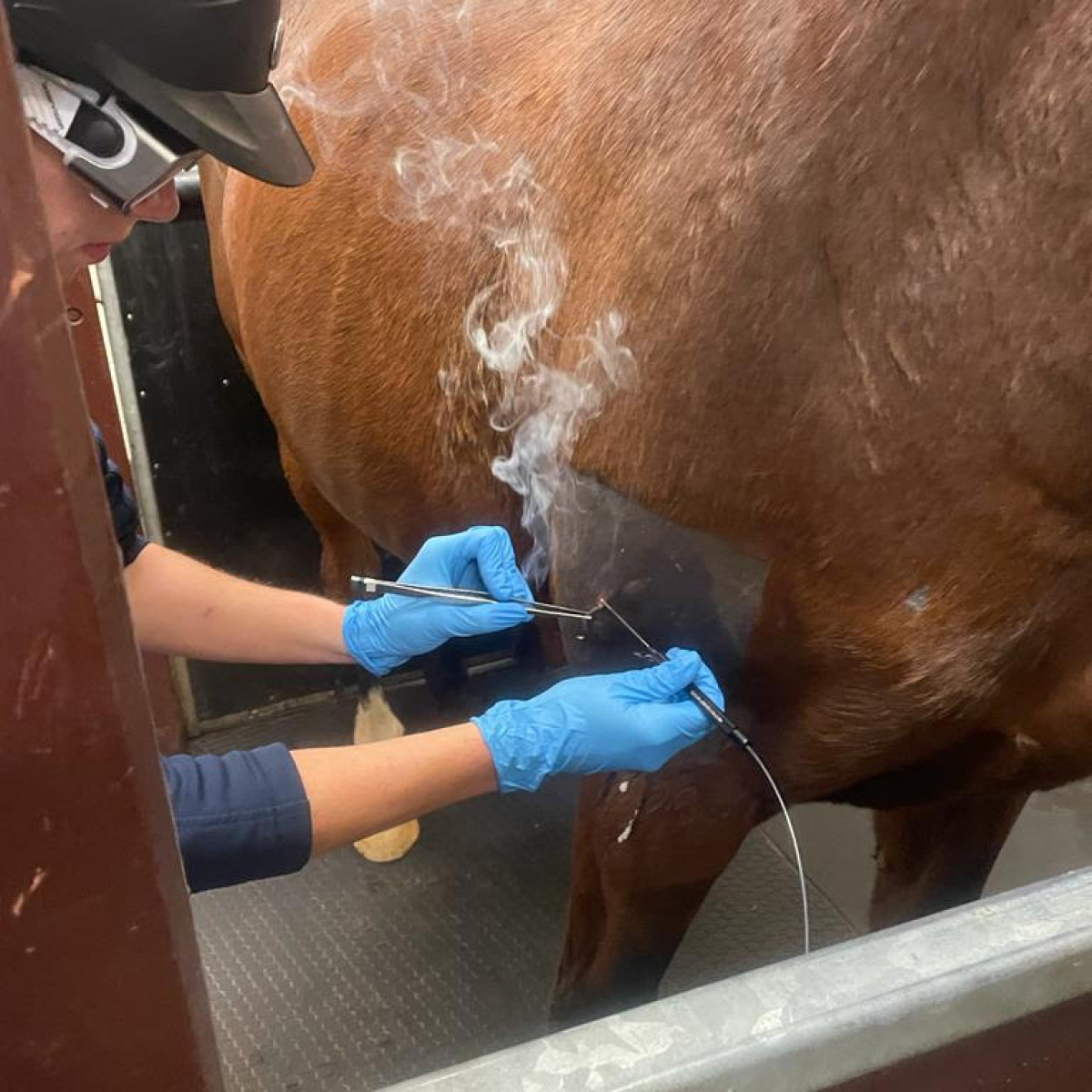How Laser Treatment in Horse Treatment Is Transforming Veterinary Take Care Of Equines
Laser therapy has arised as a transformative strategy in equine veterinary care, giving a non-invasive remedy that accelerates healing and enhances total health and wellness. Leveraging accurate light wavelengths, this cutting-edge therapy promotes cellular regrowth, decreases inflammation, and minimizes discomfort. Its effectiveness extends from bone and joint injuries to persistent ailments like osteo arthritis, substantially enhancing movement and life quality for equines. The portability and versatility of laser treatment gadgets further emphasize their growing necessity among veterinarians. As we check out the intricate technicians and real-world successes, the extensive effect on equine medical techniques ends up being increasingly obvious.
Understanding Laser Therapy

The technology behind laser treatment is grounded in the concept of photochemistry, where photons are taken in by chromophores within cells, causing increased ATP manufacturing and modulation of responsive oxygen species (Equine Therapy). This, consequently, promotes cellular expansion, reduces inflammation, and increases healing. Vet experts make use of different kinds of lasers, including low-level lasers (LLLT) and high-power Class IV lasers, relying on the details restorative goals and the nature of the equine problem being treated
Various laser wavelengths and power setups are very carefully picked to target various tissue midsts and attain desired medical end results. Security methods are critical, as improper usage can cause thermal damage or suboptimal restorative results. Hence, an extensive understanding of laser therapy's systems and applications is important for its effective application in equine vet method.
Advantages for Equine Health And Wellness
The myriad benefits of laser therapy for equine health include enhanced healing, pain reduction, and enhanced flexibility. This innovative therapy technique leverages particular wavelengths of light to penetrate tissues, boosting cellular function and promoting rapid cells repair. The non-invasive nature of laser therapy makes sure marginal anxiety and pain for the steed, assisting in a smoother healing procedure.
Improved recovery is one of the leading benefits, as laser treatment accelerates cellular regeneration and collagen synthesis. Pain reduction is achieved with the anti-inflammatory impacts of laser therapy, which reduces swelling and minimizes the manufacturing of pain-inducing chemicals.
By minimizing inflammation and pain, and enhancing cells fixing, laser treatment helps in restoring joint feature and muscular tissue versatility. Therefore, laser therapy stands as a transformative device in modern-day equine veterinary care.
Usual Problems Dealt With
Laser therapy has become a functional treatment option for a selection of usual equine conditions. Among these, bone and joint injuries are especially open to laser treatment. Equine Therapy. Soft cells injuries, such as tendonitis and ligament pressures, gain from the anti-inflammatory and analgesic effects of laser therapies, which speed up recovery and lower discomfort. Additionally, laser treatment works for problems like osteo arthritis, where it aids mitigate joint swelling and promote cells repair service.
Wound management is one more location where laser therapy has actually revealed considerable assurance. Chronic wounds or slow-healing abscess can be particularly difficult in steeds, but laser treatment boosts cellular regrowth and boosts blood circulation, therefore quickening the healing process. Furthermore, laser treatments have actually been efficiently utilized in taking care of unguis problems such as laminitis and abscesses, minimizing discomfort and promoting faster healing.

Technology Behind Laser Therapy
Past the myriad problems treatable with laser treatment, the innovation itself advantages better assessment. At the heart of laser therapy is using particular wavelengths of light to penetrate tissues and evoke organic actions. These wavelengths, normally varying find this from 600 to 1000 nanometers, are precisely absorbed by chromophores in the skin, muscular tissue, and various other tissues, instigating a cascade of cellular occasions.
Laser devices made use of in veterinary medicine typically make use of low-level laser treatment (LLLT) or chilly laser treatment. Unlike high-powered surgical lasers, these devices operate at lower power degrees, maximizing restorative benefits while decreasing thermal damages. The energy from the laser light boosts adenosine triphosphate (ATP) production, enhances mobile metabolic process, and accelerates cells repair work procedures.

Success Stories and Study

Showcasing the tangible benefits of laser therapy, various success tales and study brighten its transformative influence on equine wellness. One such instance entails a pureblood racehorse struggling with chronic tendonitis. Standard therapies produced marginal renovation, yet after incorporating laser treatment right into the program, the steed showed substantial decreases in swelling and discomfort within weeks, inevitably going back to affordable auto racing.
One more compelling example features a dressage horse diagnosed with severe back discomfort, restricting its performance. A veterinary group employed low-level laser therapy (LLLT) to target the inflamed locations, causing significant renovation in versatility and a significant reduction in discomfort. Over numerous sessions, the equine restored its peak form, showcasing the efficiency of laser treatment in dealing with musculoskeletal concerns.
Furthermore, a research study conducted at a leading equine facility taken a look at 50 equines with various soft cells injuries treated with laser therapy. The outcomes stood out: 85% of the horses demonstrated increased healing times and improved flexibility. These situations underscore the convenience and efficiency of laser therapy in equine medication, providing a non-invasive, scientifically-backed approach to boosting healing and performance in equines.
Conclusion
Laser treatment is reinventing equine veterinary treatment by offering a non-invasive therapy that speeds up healing, lowers inflammation, and eases pain. With its effectiveness in dealing with a series of problems, from bone and joint injuries to chronic conditions like osteoarthritis, this modern technology dramatically improves equine health and wellness and wheelchair. The mobility and adaptability of laser therapy read more better underscore its transformative effect on veterinary methods, strengthening its duty as a vital device in contemporary equine medical care.